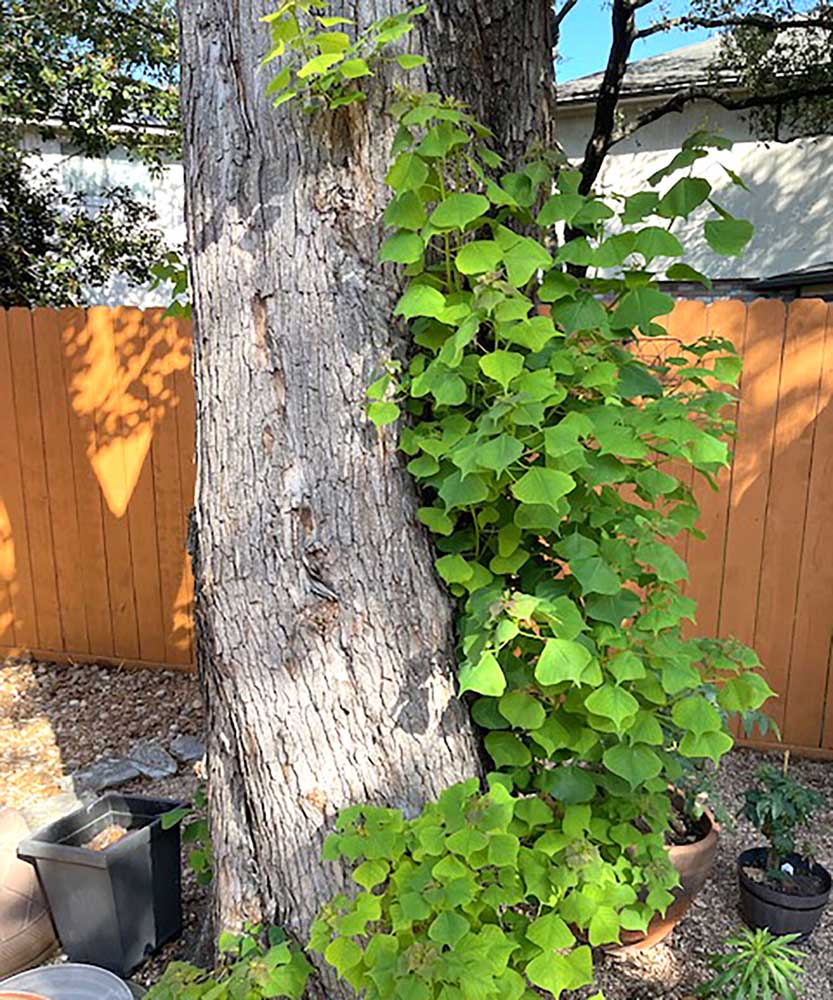Sperry: Mow bothersome weed before it blooms
Published 12:00 am Sunday, May 14, 2023

- Chinese tallow with trunk sprouts
Dear Neil: How can I get rid of these awful weeds? Their seeds stick to clothes, to our dog’s and cats’ fur and they’re almost impossible to remove. What are they called?
Answer: It’s a weed with several very understandable and curious common names: sticky willy, Velcro weed, catch weed and cleavers. Botanically it’s Galium aparine. I’ve seen the same thing happen in my rural neighborhood — it will be worse some years than others. Mowing it to keep it from flowering and going to seed will help a great deal. So will applying a broadleafed weedkiller spray (containing 2,4-D) as soon as you see it germinating in late fall or starting to grow in very early spring.
Trending
Dear Neil: I have an acre of native grasses that I normally mow one time per year, usually in January. This year I wasn’t able to do that and now I have numerous purple verbena plants growing across it. I’d like to let them reseed themselves. When, if at all, can I mow my field to allow the seeds to spread?
Answer: Of all our Texas wildflowers, that’s one of my favorites. It blooms in really bad places where nothing else wants to grow (not implying that about your acre), plus it stays in bloom for a comparatively long time. It’s mannerly and it’s a color that we don’t see widely represented in other wildflowers. I would suggest simply keeping an eye on the plants. As the seeds start to dry and release, then fall to the ground you’ll be safe to mow. It’s going to be a while longer – another month or two at a minimum. Don’t mow while the plants are still producing new flowers. Would it be possible to set your blade higher than usual this time around so you can leave the seeds that are at the bottoms of the plants even longer?
Dear Neil: We are not allowed to fence our front yard. Deer keep the St. Augustine mowed to the ground. What is the best way to prevent that kind of damage?
Answer: I wish I had the perfect answer, but there isn’t one. Usually, you’ll have to use a combination of things. Unfortunately, when it gets hot and dry and their natural food sources dry up, you can expect deer to become more desperate and willing to bypass your control measures. I did a quick online search and found scores of matches – too many to read and condense. Most included suggestions of bad smells (putrefied eggs, etc.), motion devices (pie plates that spin, motion-activated sprinklers, etc.), sound devices (horns and loud whistles) and lights. None of those sounded too good for a residence in an urban environment but perhaps there is something in there that you will find useful. Better Homes and Gardens has a good list of deer-resistant plants at https://www.bhg.com/gardening/pests/insects-diseases-weeds/tips-for-deterring-deer-from-eating-gardens/. If you want tips that are legitimate and carefully researched, you might Google “University deer resistant landscapes.” Hope that’s all a help. It’s not going to be easy.
Dear Neil: Each year these “stingers” keep coming back on the trunk of my tree. Is there any way to keep that from happening?
Answer: These sprouts on what I believe is a Chinese tallow tree would suggest to me that the top of the tree has sustained some kind of injury, most likely from the winter two years ago. When plants freeze back or are hurt by cold and are in the process of dying back, sprouts like this start taking over. Under normal circumstances, the process known as “apical dominance” keeps them dormant. If the top growth of your tree looks healthy, for now I would just trim them off close to the trunk.
Trending
Dear Neil: You mentioned that privet should be removed because it has purple fruit that birds treasure. Can it not be controlled so the birds will still have their food?
Answer: That’s a great question. I wish it were that simple. Unfortunately, birds digest the seeds and then dispose of them via droppings all over neighborhoods, vacant lots and in woodlands. Privet thickets have overtaken entire square miles in parts of East Texas, choking out native vegetation in the process. The only way of coping with it is to prevent the fruit in the first place. Our family lives across the road from two such seed sources. Both are now abandoned properties and there are hundreds of Chinese privet and Japanese ligustrum plants throwing off mature fruit each winter just waiting for transport onto our 11 acres. I have to hire two men with chain saws and shovels for several days each winter to remove the seedlings.






